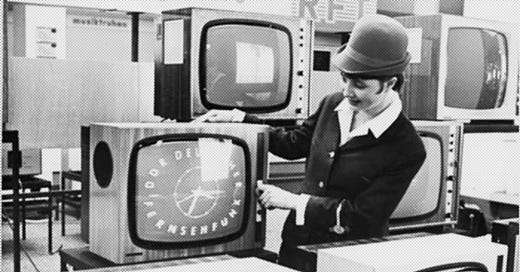Welcome to Issue #8 of Market Curve - a weekly newsletter exploring the intersection of marketing with consumer psychology and behavioral economics. Through Market Curve, I hope to offer marketers and founders a different perspective on how to better understand their customers - one that is rooted in science.
Thank you for subscribing, and please tell a few friends if you’d like!
— Shounak
Friends,
In the last issue, we explored the first part of the hero’s journey - the hero and his village. We learnt that the hero has different awareness levels and his village has different degrees of market sophistication. Your product has to be mindful of these awareness levels and sophistication degrees. Today, we will explore the hero and try to understand the underlying framework that forms his problems.
Our hero’s “problem” is an external manifestation of a deep-seated need. Problem recognition is the first part of the 5 stage process of the consumer decision making process. The 5 stages are:
Problem recognition.
Information search.
Alternative evaluation.
Choice.
Outcome.
The last 4 stages are what Google calls the “Messy middle” as I wrote earlier. For now, let’s focus our attention on the “Problem recognition” phase.
This problem, as we studied in the last issue, is the existence of a gap between the customer’s actual state and ideal state.
Scope of Problem Recognition
The difference between the ideal state and the actual state will vary based on different events. Once the difference is large enough, the problem recognition is triggered. I like to call it “the escape velocity”. Let’s understand this by way of an example.
Our hero was feeling hungry and had eaten his dinner. His actual state prior to eating was that of hunger. Now that he has had his food, he has reached his ideal state. At this point, actual state = ideal state.
A few hours passes and he is sleeping and he begins feeling hungry again. The gap between the actual state and the ideal state is increasing and our hero is on the verge of hitting escape velocity. When the gap becomes too large and crosses a “subjective” threshold, our hero hits escape velocity and the problem recognition event is triggered.
This process varies in scope too. For instance, our hero could fulfil his hunger by eating anything he finds near him. Or he will only eat a packet of Lays when he’s hungry not any other brand. The former is known as generic problem recognition and the latter is known as selective problem recognition.
If you observe closely, you’ll find that the selective problem recognition borders on a subjective bias and loyalty towards a particular brand. At this point, his decision making heuristics are kicking in. So a brand, would then in essence be a function of decision-making heuristics.
David Carr agrees. He defines a brand as:
A brand is a set of associations that combine with heuristics in the mind of consumers to shift demand.
Which makes sense. A good brand recognizes the unconscious forces governing selective problem recognition.
There are also various levels of problem recognition. Depending upon the complexity of
the problem, the time it takes to acknowledge the need may be short or long. Simple problem recognition is recognizing one is thirsty and going for a glass of water. A complex problem recognition could involve buying a SaaS product for his business.
The latter could explain (in part) why sales cycles are longer in enterprises. Because of the complexity involved via integrations with other products, ease of use etc, the business might be aware of his problem but due to the complex nature of his problem, he’s not sure where to look for a solution. This once again ties up to the customer levels of awareness.
This awareness of problem recognition goes a step further and has second order benefits flowing from it. From a structural perspective, your hero faces 3 kinds of problems: (a) External problems (b) Internal problems and (c) Existential problems. Let’s understand this by way of a SaaS product - a platform which allows independent creators to sell their items directly to their audiences.
The external problem:
“I can’t find a platform to sell my items to the audience”.
The internal problem:
“Am I good enough to sell my items to the audience?”
The existential problem:
“It’s worth a shot. Life’s too short not to explore myself”.
A product or business that answers these questions will have a far greater chance of making their hero feel special. If you do this time and again, here’s what’s going to happen:
When your customer uses selective problem recognition, your brand will be the first one on their mind. What’s more is that they will make their friends your loyal customers who in turn will tell more of their friends etc. It’s a snowball effect from there on.
It’s worth noting however, that the customer problem recognition process is a complex one, one that we will explore in the next issue. To give you a glimpse of its complexity, here’s what you can expect:

The consumer decision making process is messy as Google found out. It’s not linear and it’s not black and white. We should therefore strive to understand the consumer from a first principles perspective and work our way up.
This is what I seek to do with Market Curve but I can’t do it alone. I need your help. So share this with like-minded people and spread the word. Reply to this email and we can set up some time to talk and explore avenues on how we can make the customer actually “come first”.




